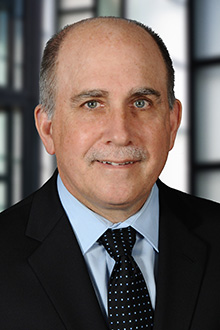Case v. State Farm Mutual Automobile Insurance Company
In Case v. State Farm Mut. Auto. Ins. Co., Inc., 30 Cal. App. 5th 397 (2018), the Second District Court of Appeal affirmed the trial court’s finding that State Farm Mutual Automobile Insurance Company, Inc. (“State Farm”) did not commit bad faith in requesting a determination of the extent to which medical expenses were eligible for payment through its insured’s workers’ compensation system before paying uninsured motorist (“UM”) benefits.
Insured Melissa Case worked for Lawry’s Restaurant. While returning to the restaurant from an off-site catering location, Case was injured in a car accident with an uninsured driver. Case sought workers’ compensation benefits through her employer’s policy and also sought UM benefits through her automobile carrier, State Farm. The Court recounted the following chronology of events:
- On July 17, 2014, Case’s attorney, John. W. Phillips, submitted a demand for UM benefits in the amount of $66,712, including $14,212 in past medical expenses, $25,000 in future medical expenses, and $27,000 for pain and suffering. The demand referenced future epidural injections to address disc bulges in Case’s back. It made no reference to any workers’ compensation benefits Case had received.
- On August 7, 2014, State Farm acknowledged receipt of the demand and advised that it required additional documentation, including information regarding Case’s workers’ compensation claim, in order to complete its evaluation.
- On September 22, 2014, Phillips provided records regarding Case’s back injury as well as documentation from Case’s workers’ compensation insurer showing a lien in the amount of $1,873.72.
- The documentation did not refer to certain claimed past medical costs included in the July 2014 demand.
- On October 30, 2014, State Farm requested a copy of the final workers’ compensation lien and breakdown. That same day, State Farm also requested that Gallagher Bassett Services, Inc. (“Gallagher Bassett”), the third-party administrator processing Case’s workers’ compensation claim, provide the status of the claim and notice of final lien. State Farm had received no information establishing that the past medical expenses detailed in the July 2014 demand, or any future medical expenses, had been addressed through the workers’ compensation claim.
- On November 6, 2014, a State Farm claims specialist emailed Phillips, advising that they had received a call from Gallagher Bassett and confirmed the final lien. The claims specialist was waiting for authority on it.
- On November 12, 2014, Case demanded UM arbitration. Phillips included a declaration with the demand in which he stated that Case’s workers’ compensation claim had settled on all issues reasonably contemplated to be determined in that claim, and that Case had no expectation that she would receive further benefits through her workers’ compensation claim.
- On December 4, 2014, State Farm wrote to Case advising that the workers’ compensation carrier had paid $2,164.99 and then closed the claim. As the July 2014 demand included more than $14,000 in past medical expenses and $25,000 in future medical expenses, State Farm noted that it appeared Case had withdrawn her workers’ compensation claim after her initial treatment in favor of presenting her claim exclusively to State Farm. As Case’s policy reduced UM benefits in the event of workers’ compensation payments, State Farm advised that it needed to determine the extent to which Case was still owed workers’ compensation benefits in order to determine what UM benefits were due under the State Farm policy.
- On December 11, 2014, Phillips provided State Farm with another copy of the lien he had previously provided.
- In February 2015, Case testified at deposition and stated in response to written discovery that she was still experiencing pain from injuries sustained in the accident.
- On March 11, 2015, State Farm’s counsel advised Phillips that Case’s workers’ compensation claim needed to be completely resolved before State Farm could complete its evaluation of her UM claim. State Farm requested documentation stating the workers’ compensation benefits Case had received.
- On March 13, 2015, Phillips responded that State Farm had received satisfactory evidence in the form of the State Farm claim specialist’s November 6, 2014 email.
- On March 30, 2015, in response to Phillips’ request for a final lien balance, Gallagher Bassett provided a benefit printout showing that $2,164.99 had been paid to date. Gallagher Bassett stated that, as Case was never discharged from care under the workers’ compensation system, she could return and seek additional treatment under the claim.
- On April 9, 2015, Phillips provided State Farm with another copy of Case’s workers’ compensation lien itemization and requested confirmation that this satisfied State Farm’s need to verify the “final” status of the workers’ compensation claim. State Farm did not respond.
- From March 2015 through July 2015, State Farm made no requests for documentation establishing the medical expenses incurred by Case or the status of her workers’ compensation claim.
- On July 6, 2015, Phillips informed State Farm that Case’s medical condition was stationary and that she had received no medical treatment since October 2013.
- On September 18, 2015, Gallagher Bassett advised Phillips that, as Case was not treated under the workers’ compensation system, all treatment was considered self-procured and was not reimbursable. Phillips forwarded this email to State Farm the following day.
- On November 19, 2015, Case agreed to settle her UM benefits claim for $35,000.
From this set of facts, the appellate court affirmed the trial court’s grant of summary judgment in favor of State Farm on Case’s cause of action for bad faith. First, the appellate court found that the loss-payable-reduction provision in Case’s policy authorized State Farm to reduce her UM benefits to reflect medical expenses potentially included in the original July 2014 demand, including past and future medical expenses for treatment that were payable by workers’ compensation, but had not been submitted by Case to her workers’ compensation carrier.
That provision states that the UM benefit “shall be reduced by any amount paid or payable to … the insured[] … [¶] … [¶] … under any workers’ compensation, disability benefits, or similar law.” (Italics added.) Here, the term “payable” necessarily encompasses medical expenses eligible for payment through the workers' compensation system, regardless of whether the insured has submitted a claim for them. That conclusion flows from the italicized language, viewed in conjunction with the related policy provision expressly denying coverage for bodily injury “to the extent [such coverage would] benefit[] … [¶] … any worker's compensation … insurance company.” (Capitalization omitted.) The italicized language and accompanying policy provision—like the additional language in Bailey—supports only one reasonable interpretation, namely, that the provision applied to medical expenses eligible for payment as workers' compensation benefits. That interpretation comports with the legislative intent underlying subdivision (h)(1) of section 11580.2, which authorizes the provision. (Rangel, supra, 4 Cal.4th at p. 14; Waggaman, supra, 16 Cal.App.3d at p. 579.)
. . .
The provision in Case’s policy thus required that the loss payable be reduced by the determinable medical expenses eligible for payment through the workers’ compensation system, regardless of whether Case submitted a claim for them. For that reason, State Farm could not ascertain the loss payable until the amount of such expenses was known to State Farm. Accordingly, the provision authorized State Farm to request a determination regarding the extent to which her past and future medical expenses could be paid through that system.
Second, the appellate court found there was no triable issue regarding whether State Farm’s conduct was reasonable.
On this record, there are no triable issues regarding the reasonableness of State Farm’s resolution of Case’s claim for UM benefits. When Case submitted her July 2014 demand, State Farm promptly requested information regarding her workers’ compensation claim. Although a dispute arose in November 2014 when Case provided evidence of a purported final lien and denied the likelihood of receiving additional workers’ compensation benefits, the dispute was “genuine,” as State Farm had reason to believe that Case’s medical expenses were eligible for payment through her workers’ compensation claim, which she had withdrawn. (Wilson, supra, 42 Cal.4th at p. 723 [dispute is genuine when insurer advances position “in good faith and on reasonable grounds”].) In early December 2014, State Farm requested a determination regarding the extent to which she was “owed” workers’ compensation benefits for her past and future medical expenses. However, Phillips first asked Bassett Gallagher whether Case’s past medical expenses were payable through the workers’ compensation system in July 2015, when he also disclosed to State Farm that Case had completed her medical treatment. The facts crucial to establishing the loss payable—namely, the extent to which Case was entitled to workers’ compensation benefits—were fully known by State Farm only in September 2015, when Bassett Gallagher made the requested determination. Because State Farm resolved Case’s claim shortly after that determination, no triable issues exist regarding bad faith.
The appellate court rejected Case’s argument that State Farm was on notice as of November 2014 that Case had concluded her medical treatments, due to Phillips’ declaration enclosed with the UM arbitration demand. The court noted that, given that Case’s UM arbitration demand expressly referred to her original July 2014 demand for UM benefits, including $25,000 in future medical expenses, State Farm reasonably understood Phillips’ declaration to merely affirm that Case had withdrawn her workers’ compensation claim, not that she had concluded medical treatment.
Finally, the appellate court rejected Case’s argument that because Case’s bills for medical treatment procured outside the workers’ compensation system were not payable by her workers’ compensation carrier, it was unreasonable for State Farm to require Case to submit those bills to her workers’ compensation carrier before paying UM benefits.
Gallagher Bassett’s determination does not establish State Farm’s bad faith. As explained above (see pt. D.2., ante), the existence of bad faith hinges on when State Farm knew the determination of Case’s eligibility for workers’ compensation benefits, not on the determination itself. The record discloses only that State Farm resolved Case’s promptly after learning of her ineligibility for future workers’ compensation benefits. In sum, Case has demonstrated no triable issues precluding summary judgment on her complaint.

